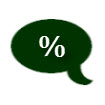 Shmuel Shayowitz (NMLS#19871) is President and Chief Lending Officer at Approved Funding, a privately held local mortgage banker and direct lender. Shmuel has over two decades of industry experience, including licenses and certifications as a certified mortgage underwriter, residential review appraiser, licensed real estate agent, and direct FHA specialized underwriter. Shmuel provides a uniquely holistic approach to comprehensive real estate and financial matters that goes well beyond any single transaction. Shmuel is an award-winning financier recognized for maximizing the short-term and long-term objectives of his client. As a contributing writer to many local and regional newspapers and publications, his insights have been featured in the media for many topics, including mortgages, personal finance, appraisals, and real estate trends.
Shmuel Shayowitz (NMLS#19871) is President and Chief Lending Officer at Approved Funding, a privately held local mortgage banker and direct lender. Shmuel has over two decades of industry experience, including licenses and certifications as a certified mortgage underwriter, residential review appraiser, licensed real estate agent, and direct FHA specialized underwriter. Shmuel provides a uniquely holistic approach to comprehensive real estate and financial matters that goes well beyond any single transaction. Shmuel is an award-winning financier recognized for maximizing the short-term and long-term objectives of his client. As a contributing writer to many local and regional newspapers and publications, his insights have been featured in the media for many topics, including mortgages, personal finance, appraisals, and real estate trends.
The thing about avalanches is that they always start slow, grows in size as it rapidly accelerates until it’s totally out of control and wrecks everything in its path. That’s all I could think about these past few days, as I saw the bond market spike 20 basis points in yield over this holiday-shortened trading week. Indeed it started slowly as the 10-yr yield crossed over the critical 1.00 mark beginning January 28, and from there, it has minimally risen almost every trading day in February.
Last Friday, the avalanche accelerated when the 10-year U.S. Treasury yield closed at 1.24. It was a big and unexpected jump. The real-time reaction to the sell-off was that the “real traders” had already taken off for the holiday weekend and that amateurs were causing the market distortion. As I spoke with a client on Sunday, I referenced the sell-off and mentioned that many analysts expect a return to calm when trading resumes on Tuesday. I cautioned that if it doesn’t, the rate I am quoting would not be valid.
Unfortunately, when the market opened on Tuesday, the sell-off continued. Yields convincingly broke above a resistance level of 1.25 and hit a session high of 1.32, its highest level since late February, when the COVID-19 pandemic began. The next level of fundamental support is at 1.373, if that matters anymore. Mind you, the 10-yr yield had spent most of 2020 below 0.77, so it almost doubled itself in a matter of a few short weeks.
The market is currently projecting expectations for U.S. inflation rates at their highest levels in a decade. This is mainly driven by forecasts of a large fiscal package, the successful rollout of vaccines to curb COVID-19, and much pent-up consumer demand from consumers who want to get out. The Producer Price Index (PPI), which measures wholesale inflation, was reported this week and supported this notion. The data showed inflation rose three times more than the market expectations. The Bureau of Labor Statistics noted the 1.3% jump was the highest on record for the index.
Also reported this week, Retail Sales increased by 5.3% in January, drastically exceeding expectations of 1.1%. The February NY Manufacturing Index, which measures the manufacturing sector’s health in the New York region, rose 12.1 from 3.5, twice the estimates. Prices rose 8 points to 23.4, which is the highest since May 2011, further showing some inflationary pressures.
Adding to the market precariousness, minutes from the January Fed meeting were also released this week. While there was no change to the Fed’s “accommodative” policy, as expected, the minutes did note that asset prices are “elevated” and said that vulnerabilities associated with household and business borrowing levels are “notable.” Fed officials also pointed out that some money market and open-ended mutual funds face “significant vulnerabilities associated with liquidity transformation.” This is something noteworthy to keep an eye on.
Clearly, people are starting to leave their homes and spend money – including the second round of stimulus checks they received last month. What they were not busy doing last week was applying for a mortgage. The Mortgage Bankers Association released their Mortgage Application Data for the week ending February 12, showing that overall application volume decreased by 5.1%. Applications to purchase a home were down 6%, and refinances decreased by 5.0%.
So, where do we go from here? There is no question that mortgage rates have changed direction, and are now headed higher. That said, there is still the opportunity to obtain historically low rates as lenders shrink margins to maintain volume. This is helping stave off a sharp spike in rates, but if the avalanche of the 10-yr yield sell-off continues, this will be very short-lived.
To learn more about Shmuel Shayowitz, click here or complete this form to be connected with Shmuel:


















